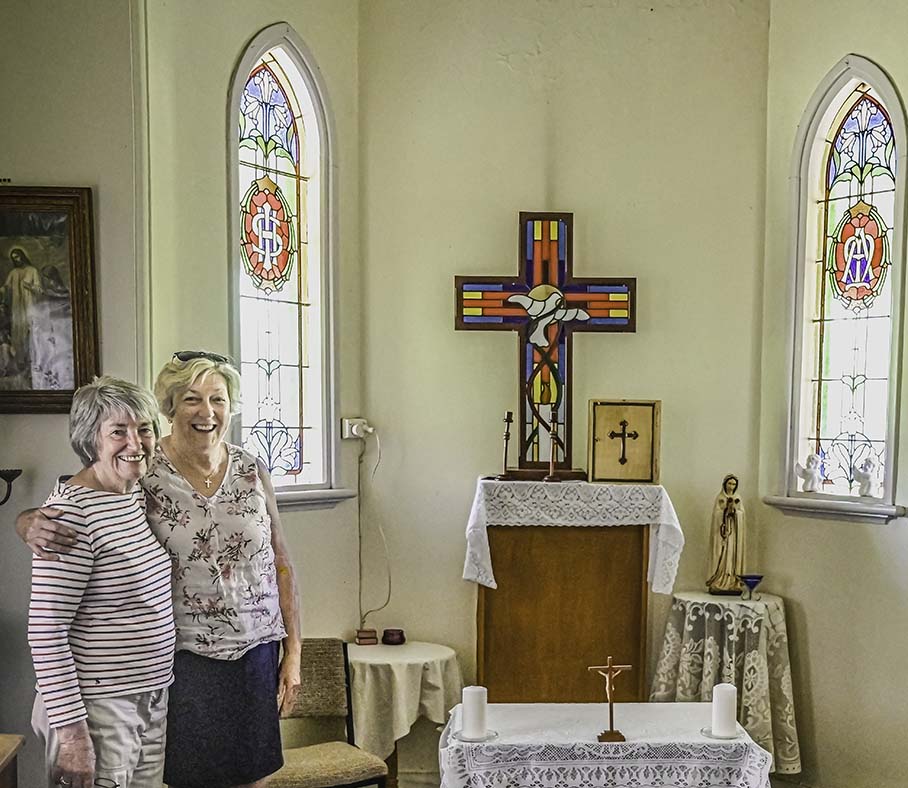

The 120th anniversary of St Brigid’s will be celebrated over the next twelve months. Firstly, noted by a Sunday mass on the 4 February at 5pm, followed by an Irish themed supper.
It is also proposed that an Oak tree be planted with a brass plaque listing the names of all the priests who have served in the parish. The Oak tree has special meaning because St Brigid came from Kildare, Kildare being Gaelic for Oak tree.
Planning is also underway for ‘Tours of the Convent’, where it is thought a tour guide will be presenting orally on the tour some of the long history around the school and church.
Other events are still in the planning stage.
Christianity was a very important aspect of early settlement in Australia. In this region the mix of Christian Churches which were established in Bridgetown provided our community with its foundations, social support, education and welfare.
Below is a little of the history of St Brigid’s church, school and convent which is taken from note sheets from the Bridgetown Historical Society: In the early days of the settlement of Bridgetown, the new settlers were accompanied by a religious order which visited the district to tend to the spiritual and educational needs of their creed, for the all-important births, deaths and marriages.
Prior to a church and school being built in 1894, two Redemptorists priests, Fr Treacey and Fr Leciale visited the district to tend to the spiritual needs of the townsfolk.
The Redemptorists are a religious congregation of priests and brothers within the Catholic Church who live in a community for the sake of preaching the Gospel of Jesus Christ, especially among people on the margins of society and the church.
The first church was built at the corner of Roe and Steere Streets in 1894, this building also served as a school. It was a little wooden shack, a one room timber construction with a tin roof with one teacher teaching all ages in one room. It still stands at the centre of the Catholic grounds, now commonly referred to as the tuck shop.
The first marriage was performed in 1901 by Father Leciale, when P. McAlinden and J. O’Toole were wed.
In 1903 a stone church was erected on the site. It was built in the Federation Free Style of local handmade bricks. The bricks used to construct the church were made from the clay dug up from the now named Somme Creek, which runs along the back of the church grounds, and fired on site.
The Catholic Parish of Bridgetown was formally declared in 1903 and placed under the protection of St Brigid of Ireland.
The new church at Bridgetown was consecrated in 1904 by his lordship the Bishop of Perth, Matthew Gibney and was proposed by Mr. O’Toole. He appealed to the catholic people of Bridgetown to support the future convent school which was to be staffed by some nuns coming from Bunbury.
In the same year, the Bishop of Perth asked a group of Mercy sisters to come to Bridgetown to minister to the educational needs of the Bridgetown children. The Sisters of Mercy are dedicated to serving people who suffer from injustices related to poverty, sickness or lack of education.
The Catholic School’s sports oval was then at the Bridgetown Show grounds from 1895 to 1903.
The catholic faithful bought the land at the back of church in 1903. This was then transformed into the school’s sporting oval.
It’s thought the Convent was built during 1904, and was opened in 1904. Unfortunately, no record has been kept of the actual dates of the building of the convent.
It was first built as a single storey boarding house for catholic students to attend who came from out-lying areas. The convent later became a home for the nuns, when there weren’t enough pupils boarding.
Later the convent had a second storey added. The convent was then used by the nuns, with music rooms, a confessional and a small Chapel added.
The convent was also used during the second world war to house orphans from those coastal towns coming under enemy fire, making a safe haven for evacuees.
One of those evacuees from Perth was Thomas Cook, who went on to establish and manufacture Thomas Cook clothing, a brand of tough well-made clothing. After his retirement in the 1990s, and still having a soft spot for Bridgetown, he would visit every few years up to the year 2000, just to keep an eye on the place, dropping into the shop to have a yarn and to discuss how things were progressing. He was on the mailing list for The Mailbag for quite a few years, his son later coming to Bridgetown to inform the town of his passing.
Who was St Brigid? Brigid was born in County Louth, Ireland in the year 451, two decades after Christianity was brought to Ireland.
Her mother is said to have been a Scottish slave who was baptized by St Patrick; so, Brigid herself was born into slavery but as a Christian.
Brigid is recorded as having founded a number of monasteries most notably in Kildare where she also founded a school of art which produced the Book of Kildare, a hand painted book of the four gospels. Sadly, the Book of Kildare has been lost.
Over the years St Brigid has proven to be a most suitable protector for Bridgetown.
This Story was published on February 6th 2024
In Issue 339 of The Mailbag
© The Quality Shop 125 Hampton Street Bridgetown Western Australia 6255
mailbag@thequalityshop.com.au